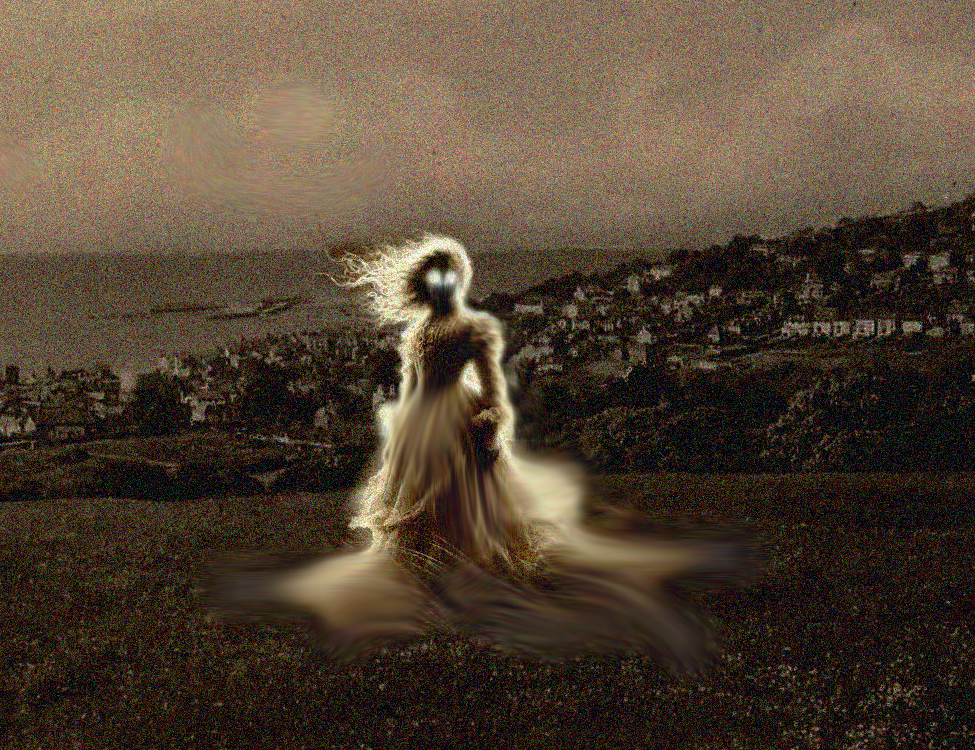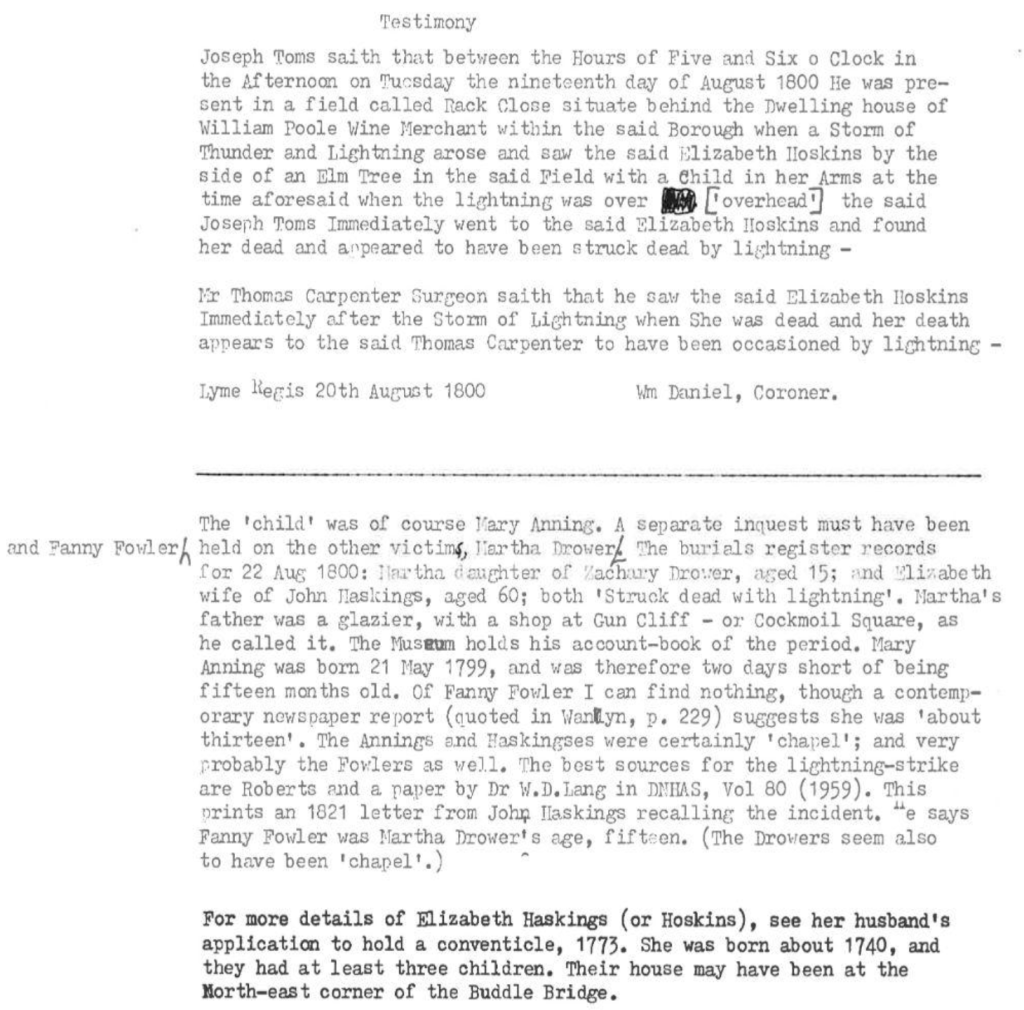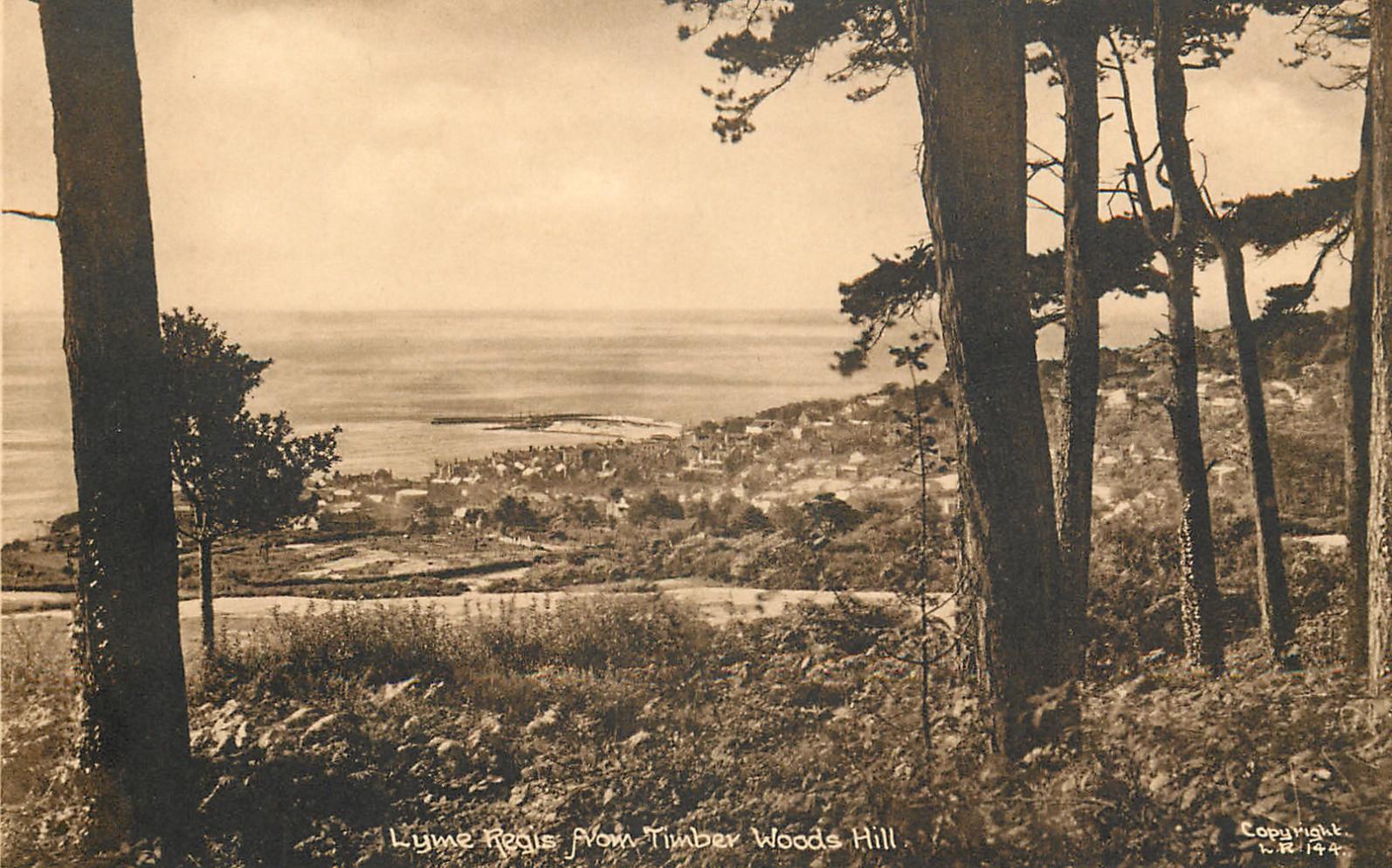This page will grow into a collection of local family stories of ghosts and hauntings in and around Lyme Regis. To submit your story, please go to Add Your Story. We will review it and add below if appropriate.
Martha Drower – The Timber Hill Girl
A ghost story linked directly to Mary Anning, Lyme Regis’ most famous historical figure. For more information on Mary please visit any of these links:
https://www.nhm.ac.uk/discover/mary-anning-unsung-hero.html
https://www.maryanningrocks.co.uk
https://www.lymeregismuseum.co.uk/collection/mary-anning/
Below is the story of Martha Drower, the girl who died in the dramatic seconds of a lightning strike in August 1800 that Mary Anning survived!

This is the story that started it all. It’s not a pleasant one and it might never have reached the world but for a chance meeting in 2017 with an elderly lady who needed help. Further historical digging linked reports of a ghost whose restless and troubled spirit haunts Lyme Regis’s to one of the town’s most famous historical figures: Mary Anning. The Mary Anning Rocks statue now stands resolutely leaning into the wind down on the seafront and is visited by tens of thousands each year. Martha Drower who died in the storm that Mary survived has hardly been mentioned by history but her story is dramatic and unfinished.
One of Lyme Regis Haunts founders takes up the story:
“I was in Lyme Regis shopping on a warm September day when I met a lovely lady who seemed confused. I realised she might be having a passing ‘senior moment’ and suggested she sat down for a few minutes. We were outside the Royal Standard so I hleped her inside and ordered some tea. She had lived in Lyme Regis for most of her life, as had her mother and grandmother. Her husband had passed away in 1998 from cancer and she had continued living in their home. But with the steepness of our town, was finding things harder with age. She asked me what I did and I said ‘paranormal research and history’. This is so often a conversation killer but she said: “so you know about the Timber Hill Girl”?
I know much of Lyme’s social history and ghost stories but this was a new one on me, so I replied that I had not. She frowned. “It’s not a nice story. I heard it from my mother and she heard it from her mother. We both wish we hadn’t heard it but it’s one of those you hear when you’re young and it sticks with you.” I asked her to tell me more.
She told me of a young girl who had been struck by lightning on the hills behind Lyme. Her grandmother’s tale was that when a storm was brewing around Lyme, the smell of burning flesh (she said ‘bodies’) would sometimes permeate Timber Hill. Her grandmother reported tales of a girl walking on fire with burning eyes who sang. The grandmother had told her “they shouldn’t have died”. The ‘they’ sparked the search.
I asked if I could record some of this on my phone and although she was a bit reluctant, I captured a short voice memo just in case (this turned out to be a godsend – if that’s the right word in these circumstances!). We finished our tea and she seemed OK, so I left her to find her way home. I offered but she refused further help. It was an intriguing ghost story but one reminiscent of so many unsubstantiated family fireside tales.
Then in 2023, while browsing the Dorset Archives looking at Mary Anning entries, I came across an entry for the Drower family, who lived near Cockmoil Square in the 1700s. Mr Drower was described as a “sometime glazier” (an interesting title!). Born in 1704, he remarried as a widower in 1777 to a much younger wife, Martha. She had three children, two of whom died in infancy, leaving the last—also Martha—as the only of the latter Drower children to reach her teens. and the only one to survive past her father’s death. Aged 15, the archives simply report that young Martha went for a walk with a nurse (NOTE: in the 1700s, a nurse was often not a medical nurse but a mother who continues lactating by feeding other women’s children … the source of the word ‘nurse’ is the old English ‘norice’ or ‘nourish’ in modern English). It proved both fateful and fatal. The report says that both were killed by lightning on a late August evening in 1800. We can later trace the nurse’s name to be Elizabeth Haskings. A copy of the Dorset Archive record of Martha and Elizabeth’s burial record and the inquest document are shown below.
This tie to the lady’s story of the Timber Hill Girl piqued our interest.
There are many references to Mary Anning’s survival of this fateful lightning strike. Indeed, the famous historian of science, Hugh Torrens, once gave the Presidential Address: Mary Anning (1799-1847) of Lyme; ‘The Greatest Fossilist the World Ever Knew’ to The British Society for the History of Science. The story in his address ties the history of Martha to the famous Lyme Regis fossil hunter. In fact, it makes Mary the centre of the story (although the ghost seems to be associated with Martha for the reasons above).
You can see the full address here: https://www.jstor.org/stable/4027645 (This is from the September 1995 Edition, Vol. 28, No. 3 pp. 257-284, Published by: Cambridge University Press). In this account, we find two paragraphs that note that Mary Anning (born 1799) was named after her sister, Mary, who had perished in a house fire a year earlier in 1798. Her parents took the name of the child who had died and passed it on to the famous Mary we all know. The death of this sister is the first connection here to fire. The second came dramatically when Mary was a toddler.
Here we can establish a link directly from Martha to Mary. Mary Anning was not only there when Martha died, she was she was the only survivor of the incident that took three lives and was just 15 months old in the arms of nurse, Elizabeth Haskings (also written in various documents as ‘Hoskins’ or ‘Haskin’). Fanny Fowler, likely Martha’s aunt as Fowler was the maiden name of Martha’s mother, also died.

Not only this but reports dating back to 1834 suggest that the incident ‘transformed’ the famous Mary who ‘from that time, from a dull child, became very intelligent’. A more elaborate version (possibly with considerable poetic licence) of these events was later recorded in Shelley Emling’s book The Fossil Hunter . The 1834 link is forged in the famous History of Lyme Regis by George Roberts (link takes you to a Google book) where, on pages 287 and 288, where we find this extraordinary account:
Richard [Anning] had a daughter named Mary, who was taken by her nurse, Aug. 19, 1800, to the Rack Fields where some equestrians were to perform. In consequence of an extraordinary display of vaulting on the preceding evening, the spectators were very numerous . The weather was intensely hot and sultry; the clouds seemed to indicate the approach of a thunder-storm , but did not deter the multitude from staying to witness the conclusion of the performance. At about a quarter to five, P.M., a passing cloud discharged a heavy shower, which caused those assembled to effect a hasty retreat.
Many betook themselves to the adjoining linhays ; others went home ; but the less prudent sought shelter under cover of some lofty elms that stood in the field. A vivid discharge of the electric fluid shortly ensued, followed by the most awful clap of thunder that any present ever remembered to have heard.
All appeared deafened by the crash : after a momentary pause,a man gave the alarm,by pointing to a group that lay motionless under a tree. Some persons instantly ran to the spot, where there appeared three women and a child lying on the ground. All the grown persons were dead : the infant, Mary Anning, upon being put into warm water, revived : she had sustained no injury. She had been a dull child before, but after this accident became lively and intelligent, and grew up so.(Here is a link to an online image of this page)
With the help of the Dorset Archives, we were able to find the inquest report by Lyme Regis coroner William Daniel recorded on the following day (20th August 1800) into Elizabeth Haskings’ death. Here is a transcription typed up in the 1970s for the original script:

So the provenance of the story heard during a chance encounter in the streets of Lyme Regis now slots perfectly into the history of from the town at the turn of the 18th century taking on some disturbing new angles.
Let’s summarise:
- The ghost Martha was reported by the lady I encountered as endlessly walking Timber Hill where she had been killed by lightning around 5pm on 19th August 1800. She had heard it from her grandmother who had heard it from hers. But she asserted that people still saw ‘a burning girl’. Martha Drower was one of three deaths, with the toddler Mary Anning the only survivor.
- Martha was the last of the Drower children, born to a octuagenarian father but she never made it beyond 15. She died that day on 19th August 1800 killed by lightning. Her nurse also died as did her aunt, Fanny Fowler
- Mary Anning not only survived but was apparently changed by the incident. This is more likely an urban myth given how young Mary but perhaps it is likely that such an extraordinary incident could have had an effect on the small child.
- We don’t know how Mary survived a lightning strike that instantly killed the three grown women she was with. We know that she was revived after being ‘dipped into warm water after’.
- When we investigate Mary Anning’s life further, there is a further odd link to fire. She was named Mary because her parents gave her the name of an older sister who had died in a fire two years before her birth.The sister had been left alone in a room with burning wood shavings. Her clothes caught fire and she died from her burns. This was reported in a Bath newspaper.
- In another twist of fate, Mary’s brother Joseph died in a fall from the cliffs just a mile or two away from all of the events of 19th August 1800.
When these strange links from Martha to Mary came to light, I tried to track down the old lady in Lyme who had started the whole extraordinary sequence of events. I wanted to tell her the story behind the story that had been shared in her family since the 1800s. I asked around various shops in Lyme Regis but heard she had died of COVID in 2022, taking with her her grandmother’s account of Martha Drower’s ghost. We have a very bad audio recording where the lady recounts how her grandmother used to frighten her with the story of a burning girl haunting Timber Hill around the place that we had pinned down from her account. This is around the spot Treetops Care Home used to stand on Overton Close, Timber Hill (here is a link to streetview). That house itself has a chequered recent history. It closed following a poor Quality Care Commission report in 2019 before being sold eventually to developers. A further piece of this eerie jigsaw comes from another chance encounter as the work to transform it was underway. This time, during a conversation with a builder who was doing some work on a friend’s house in Lyme, we got chatting about our work with ghost stories and he mentioned working on the foundations of the new development on Timber Hill where high-end houses were being developed. He had worked on one called Overton House (the building that used to be Treetops Residential Home). I told him the tale of Martha which caused him to blanche a little. He told me that workers on the site had apparently repeatedly smelled burning while working on the development during the late summer of 2021. Their investigations into the source never found one. None of them ever saw Martha but from the moment the smell had first appeared, their work had been fraught with issues and misfortunes. Coincidence? Maybe. Maybe not!
Martha’s life is a closed book to us apart from a few lines in a history book and archives of birth/death/burial records from the time but the story had lasted 250 years until my chance meeting with an elderly coffee companion who remembers her grandmother’s tale. Had I not met her by chance, it might have died with her.
Martha maybe not.
If anyone knows of any other sightings (or spellings of the Timber Hill Ghost) please use our Add your story page to send details. It’s the story that started this website and we believe that we all deserve to hear more about Martha. Poor girl.

Comments
Hi, Bizarre to see this. My mum used to live near Timber Hill and she has also heard a story…

Hi Sylv Thanks for this. Very interesting that your mum heard about the smell as some of the most recent…